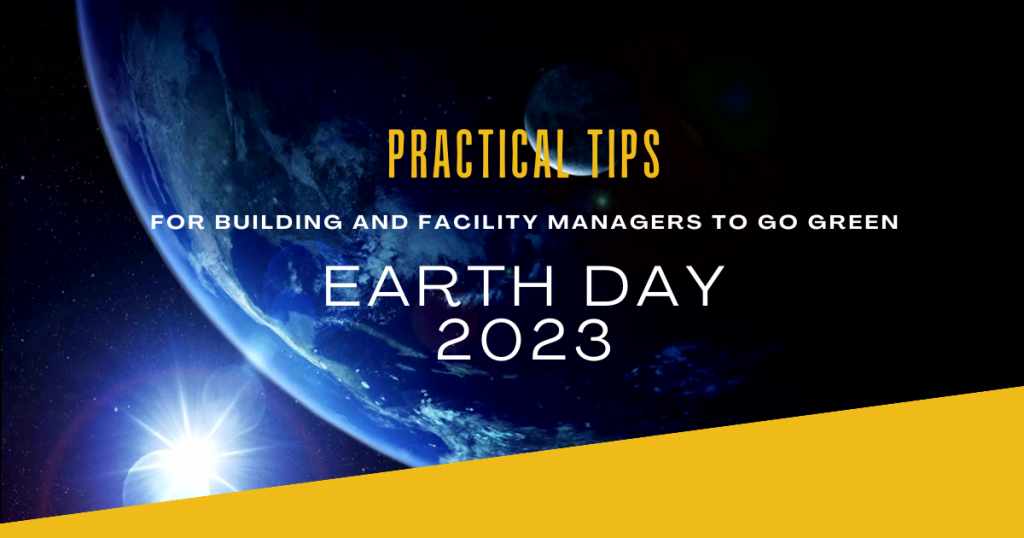
5 Practical Tips for Building and Facility Managers to Go Green on Earth Day and Beyond
As a building or facility manager, you play a crucial role in optimizing the environmental impact of the structures you oversee. In an era where climate change and sustainability are increasingly vital concerns, implementing eco-friendly practices can help lower energy consumption, reduce waste, and improve overall efficiency. With Earth Day approaching, we wanted to share five practical tips focusing on HVAC/R and electrical systems to help you make your building or facility greener.
Upgrade and Maintain HVAC/R Systems
Regular maintenance of your HVAC/R systems can significantly improve energy efficiency and reduce environmental impact. Schedule routine inspections to ensure all components function optimally and identify potential issues before they escalate. Additionally, consider upgrading older systems to more energy-efficient models that utilize environmentally friendly refrigerants. Variable frequency drives (VFDs) can also be installed to control fan and pump motors, reducing energy consumption and extending equipment life.
Implement Building Automation Systems (BAS)
Building automation systems (BAS) can help you monitor, control, and optimize your building’s HVAC, lighting, and electrical systems. By integrating these systems and utilizing real-time data, you can make informed decisions to maximize energy efficiency, reduce waste, and minimize your environmental footprint. A well-designed BAS can help optimize temperature settings, lighting schedules, and demand-response strategies, leading to significant energy savings.
Opt for Energy-Efficient Lighting Solutions
Switching to energy-efficient lighting options, such as LED or CFL bulbs, can significantly reduce your building’s electricity consumption. LED lights not only consume less energy but also have a longer lifespan, reducing the need for frequent replacements. Incorporate occupancy sensors, daylight harvesting systems, and dimming controls to further optimize lighting usage and minimize energy waste.
Consider Electrical Load Management
Electrical load management strategically shifts energy consumption to off-peak hours when demand and rates are lower. Implementing load management strategies can help reduce strain on the electrical grid and minimize your building’s carbon footprint. Work with your utility provider to identify the best opportunities for load management, such as scheduling non-essential electrical equipment to operate during off-peak hours or utilizing energy storage systems to store electricity during low-demand periods for later use.
Encourage Energy Conservation Among Occupants
Educate building occupants about the importance of conserving energy and encourage them to adopt energy-saving practices. Provide information on how to reduce energy consumption, such as turning off lights and electrical devices when not in use, unplugging chargers, and using energy-efficient appliances. You can also incentivize energy conservation by implementing energy usage competitions or recognizing individuals demonstrating exceptional commitment to energy-saving practices.
Improving the environmental impact of your building or facility’s HVAC/R and electrical systems is not only beneficial for the planet but can also lead to cost savings, improved occupant health, and a stronger reputation for your organization. By focusing on system upgrades, building automation, energy-efficient lighting, load management, and fostering energy conservation among occupants, you can make a lasting positive impact on the environment and your community.
Curious to learn more about how you can optimize your facility? Connect with our expert team today!
